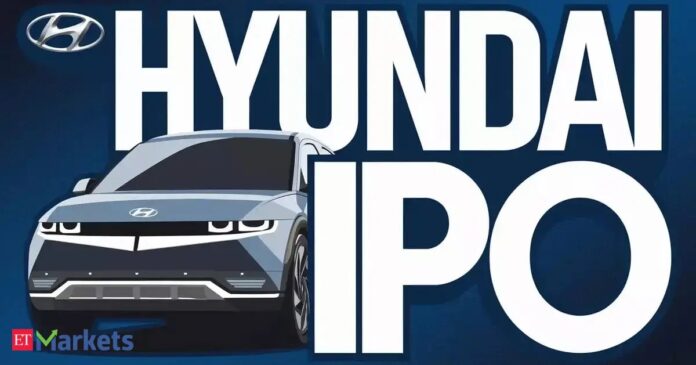Hyundai Motor India’s Historic IPO: What Investors Need to Know
The Indian market is currently abuzz with excitement as Hyundai Motor India gears up for its largest-ever Initial Public Offering (IPO), aiming to raise approximately ₹27,870 crore. This monumental event is not just a financial maneuver; it represents a significant moment in the automotive landscape of India, a country that has become increasingly vital to Hyundai’s global strategy.
Understanding the Structure: Offer for Sale (OFS)
Hyundai’s IPO is structured as an Offer for Sale (OFS), where 14.2 crore shares will be sold by its Korean parent company, Hyundai Motor. This means that the funds raised will not flow back into Hyundai India but will instead benefit the parent company. This structure raises questions about the true value of the IPO and whether it lives up to the hype surrounding it.
Typically, an OFS can be a double-edged sword. On one hand, it allows existing shareholders to realize gains from their investments. On the other hand, it does not provide new capital for the company to pursue growth initiatives, unlike a fresh equity sale. This situation prompts investors to consider the implications of such a structure carefully.
Hyundai India: A Nuanced Perspective
Despite the lack of direct funding from the IPO, Hyundai India is not without resources. The company boasts a robust cash reserve of ₹8,513 crore, which provides the financial flexibility to pursue strategic growth plans independently of the IPO proceeds. This financial cushion allows Hyundai to continue expanding its operations and capitalizing on opportunities within the Indian passenger car market.
Moreover, the Korean parent company, which ranks as the third-largest original equipment manufacturer globally, has indicated that the funds raised through the IPO will be reinvested into new products, technology, and research and development. This investment is crucial, especially as the automotive industry pivots towards electric vehicles (EVs) and hybrid technologies.
Strategic Growth and Future Prospects
Hyundai’s ambitions in India are not merely about maintaining its current market position; they are about establishing the country as a global manufacturing and export hub. With India contributing 15% to Hyundai’s sales, it stands as the third-largest revenue generator for the company, following the U.S. and South Korea. The company has already invested $5 billion in India and plans to inject an additional $4 billion over the next decade.
Analysts believe that this IPO is a strategic move to position India as a key player in Hyundai’s international operations. The transition from traditional models like the Santro to more advanced EV and hybrid offerings aligns with the company’s long-term growth strategy, as highlighted by industry experts.
The IPO’s Implications for Investors
While some analysts view the OFS as a drawback, others see it as an opportunity. Abhishek Jain, Head of Research at Arihant Capital Markets, emphasizes that investors should not view the IPO solely as a promoter offloading shares. Instead, it represents a chance to engage with Hyundai’s evolving growth narrative and its efforts to capitalize on the burgeoning EV market.
Conversely, some market observers, like Prashanth Tapse of Mehta Equities, express skepticism about the OFS structure, likening it to "early Diwali" for the parent company in Korea. Nonetheless, they acknowledge the long-term potential of Hyundai’s Indian operations.
Key Details of the IPO
The IPO is priced in the range of ₹1,865 to ₹1,960 and is set to open on October 15, closing on October 17. Investors can expect the stock to debut on the bourses on October 22. This timeline is crucial for potential investors looking to capitalize on Hyundai’s future growth.
Conclusion: A Legacy of Innovation
Hyundai’s journey in India began 28 years ago with the launch of the Santro, and it has since evolved into the second-largest carmaker in the country, holding approximately 15% of the passenger vehicle market. The company is poised to launch new electric vehicles, establish charging stations, and introduce hybrid cars starting in 2027.
As the IPO approaches, investors are encouraged to weigh the potential benefits against the inherent risks associated with an OFS. While the immediate financial implications may favor the parent company, the long-term growth trajectory of Hyundai India remains promising, making it a noteworthy player in the evolving automotive landscape.
(Disclaimer: Recommendations, suggestions, views, and opinions given by the experts are their own and do not represent the views of Economic Times.)

